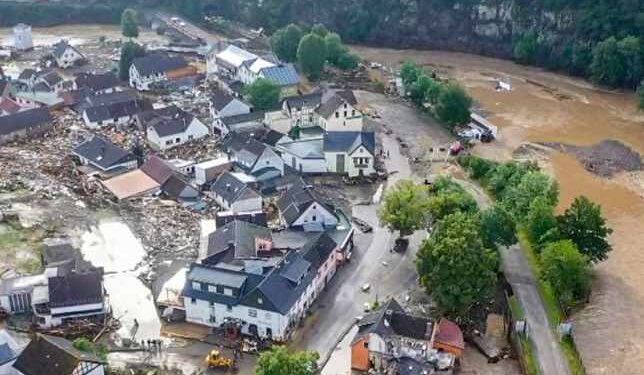Losses belching out of Europe as they relate to the June and July severe floods in central and eastern Europe show a high percentage of uninsured losses swelling to billions of Dollars, depicting that the numero uno in insurance penetration is far from home and dry, there are still wide gaps to cover to make a full circle.
This was further accented by a 12-page document, Catastrophe Recap: First Half of 2021 by impact Forecasting a catastrophe model development team at Aon which fenced worldwide economic losses from natural disaster events in January to June are estimated to be around US$93bn. Global insured losses, meanwhile, stand at approximately US$42bn.
Meanwhile records reflecting the state of take-up in Europe especially eastern and central Europe make the uninsured risks in Nigeria and the rest of the continent squirm with adolescence laughter; an unattractive narrative to suggest we are not alone in this. However, that in no way gives a sigh of relieve that the less than 2.5% penetration in Nigeria stands anywhere near the record in the flood insurance take-up in the insurance lean areas of Europe.
Commenting on the staggering dimension of uninsured risks in Nigeria, the Commissioner for Insurance, Mr. Sunday Thomas at a webinar held September 2020 in Lagos and hosted by First Law & Impact Consulting, admitted the low national insurance penetration and noted that the nation’s insurance market lands among the largest in the world with uninsured risks in a single market.
Thomas followed this up with comments that the situation could be reversed because of the enormous market potentials and also regulatory policies being rolled out and the buy-in of the operators, these put together are expected to produce good results steadily.
The president, Institute of Loss Adjusters of Nigeria, and managing director at Grand Metropolitan Associates, Mr Reginald Egbuniwe, admitting that Nigeria is well squared in the bracket of high uninsured risks said what the public need to do is to embrace insurance and steadily over time reduce the high level of uninsured risks. He speaks, “Is for the public to embrace insurance because uncertainty is always present in everyday life and that is what insurance does, it takes care of uncertainty.”
On the European scene, reports from Artemis and Insurance Business America blogs of Impact Forecasting details of the flood, spiral overall economic losses as well as insured losses, provide some insight into the worst affected areas. “There are significant regional differences in insurance take-up. In the hardest hit regions from the July 2021 floods, take-up rates include 47 percent in Nordrhein-Westfalen; and only 37 percent in Rheinland-Pfalz; 44 percent in Hesse; 38 percent in Bayern; but 94 percent in Baden Wutternburg.
With the flood insurance penetration in Germany to be around 46 percent of properties having some level of flood coverage, Aon comments, “a large portion of the damage is expected to be uninsured, however. The total economic loss from this event is very likely to exceed USD 10 billion. This reinforces the importance of flood protection imprints, earlier warnings to vulnerable populations, adaptation to more amplified weather phenomena, and increased measures to lower the protection gap.
“The combined cost of the flooding across Europe was anticipated to reach well over into the billions of EUR. The highest portion of anticipated insured losses from the event was expected in Germany,” Impact Forecasting stated.
The Impact Forecasting team have provided a useful table of major European flood events and their resulting industry losses, 2021 equivalent:

Aon explains, “One notable point in the historical loss table above is the significant portion of the economic losses that went uninsured. Some regions – like the UK and Germany – do have more robust insurance take-up for residential and commercial assets, though wide gaps remain.” It adds that “The observed footprint and scale of damage from this event makes it highly likely that both the overall economic and insured loss will each be measured in the multiple billions (EUR)”
Its also notable that the impact from the recent flooding came on the back of a costly recent period for European insurance and reinsurance exposed players.
On the flood Impact Forecasting explained, “This will be a continuation of what has been one of the most expensive six week periods in Europe for the insurance industry in years. a series of secure convective storm (SCS) outbursts in late June – June 17-25 and June 28 – 30 – has aiready been estimated to result in a combined insurance loss of USD 4.5bn.
The overall economic loss was even higher as nearly USD 6.5bn. That equals the costliest SCS two-week stretch on record with peril for the European insurance industry. Most of that damage was due to catastrophic hail, tornadoes, and flash floods incidents in Germany, Switzerland, France, Austria, and the Czech Republic.








































